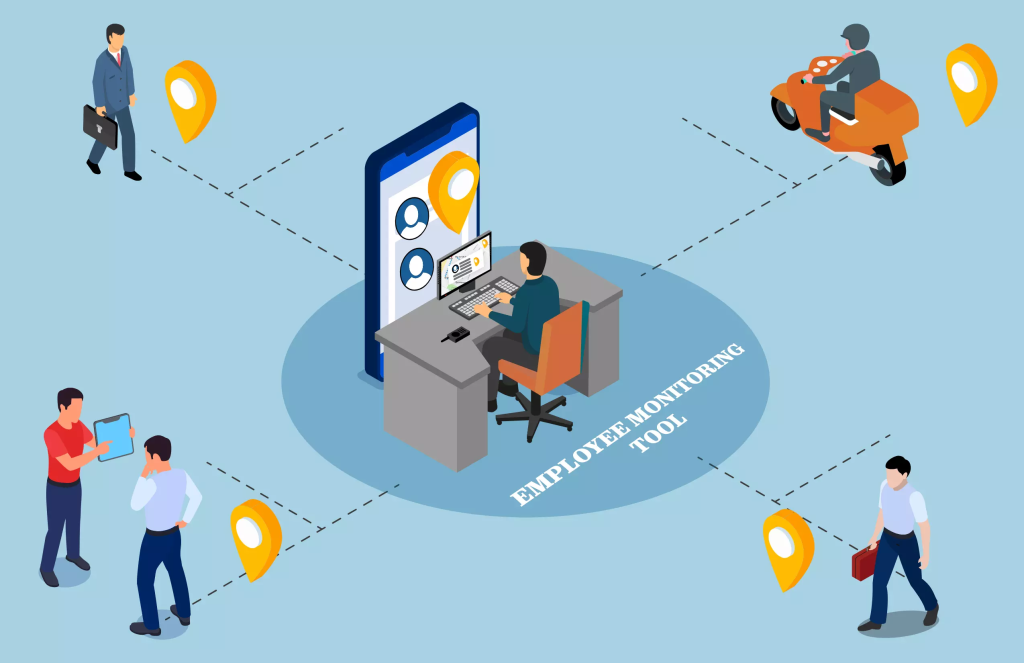
In today’s fast-paced work environment, businesses are constantly seeking ways to enhance productivity and efficiency. One tool that has become increasingly popular is employee monitoring software. This software provides employers with insights into their workforce’s activities, helping them optimize performance, streamline processes, and foster a more productive workplace.
How Does Employee Monitoring Software Work?
The software operates discreetly in the background, collecting data without interrupting the normal workflow of employees. Here’s how it generally works:
Data Collection: The software captures data on applications used, websites visited, and the amount of time spent on each. It can also track keystrokes and mouse movements, providing insights into employee engagement and productivity levels.
User Activity Reports: Employers can access detailed reports summarizing employees’ activities. These reports highlight which tasks are being worked on, how much time is spent on each, and any idle periods that may indicate distractions.
Real-time Monitoring: Some systems offer real-time monitoring, allowing managers to observe what an employee is doing at any given moment. This can be particularly useful for remote work settings where physical supervision is not possible.
Compliance and Security: The software can help ensure that employees are adhering to company policies and legal requirements, such as data protection regulations. It also adds an extra layer of security by monitoring for any suspicious activities that may indicate a security breach.
Benefits of Employee Monitoring Software
Boosted Productivity: One of the primary benefits of monitoring software is its ability to improve productivity by project tracking. For example, by understanding how time is spent, tools like Controlio can identify inefficient processes and areas where employees may be wasting time. This insight allows for targeted training and adjustments to workflows, ultimately enhancing overall productivity.
Enhanced Efficiency: Employee monitoring software helps streamline operations by providing visibility into the processes used for various tasks. This can lead to more efficient work methods, clearer communication, and better collaboration within teams.
Data-Driven Decision Making: With access to detailed activity reports, managers can make data-driven decisions about staffing, workload distribution, and project prioritization. This reduces guesswork and allows for more effective management.
Improved Employee Accountability: Knowing that their activities are being monitored can encourage employees to stay focused on their tasks. It fosters a sense of responsibility and commitment to their work, which can lead to higher job satisfaction and reduced turnover rates.
Remote Work Monitoring: In the era of remote work, employee monitoring software is especially valuable. It enables employers to keep track of productivity even when employees are not physically present in the office. This helps maintain team cohesion and performance standards across different work locations.
Considerations When Using Employee Monitoring Software
While employee monitoring software offers numerous benefits, it’s important to consider its impact on workplace culture. Excessive monitoring can create a sense of distrust and stress among employees. Therefore, it’s crucial for businesses to use the software ethically, transparently, and with the intention of improving the work environment, not just monitoring for the sake of monitoring.
Moreover, clear communication about the purpose of the software, how it works, and what data will be collected is essential. Employees should understand that the goal is not to micromanage but to enhance productivity and efficiency. This fosters a positive workplace culture where employees feel valued and understood.
Employee monitoring software can be a powerful tool for businesses looking to boost productivity and efficiency. When used appropriately, it provides valuable insights into employee performance, enables better decision-making, and supports remote work arrangements.
